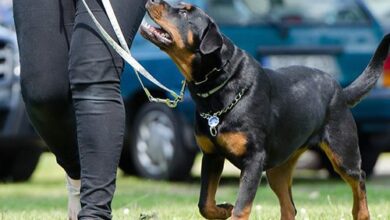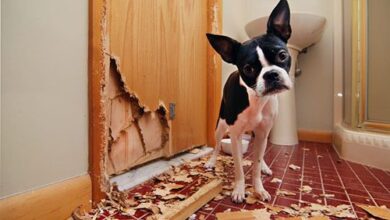Dog Crate Training Problems
Before a crate can become your dog’s favorite resting place and lifelong friend, there will be a number of dog crate training problems to deal with. Not a single problem will be universal to all dogs, but almost every dog will have one or more problems before it can acclimatize to the cage. Essentially, therefore, crate training should be conducted thoughtfully and patiently, paying attention to any problems and solving them promptly to ensure that your dog does not detest or avert the cage.
What Are Some Of The Most Dog Crate Training Problems?
Crate Aversion
One of the leading dog crate training problems is usually crate aversion (cage dislike). Crate aversion refers to a state in which the dog would always complain, cry loudly, or be reluctant to get into the crate, ending in hysterical attempts to escape and terrible injuries in the end. Dogs may dislike a crate because it is too small or too restrictive to stay in; it has a bleak interior (lacking toys, blankets and treats), the crate has been previously used to punish the pup, or the pup is often forced to get into the crate when it does not want. Crate aversion may also be caused by long confinements, such as beyond 24 hours. Dogs may be compelled to defecate or urinate inside crates if they are confined for too long; acts which may defile the crates and render them inappropriate for house training.
To avoid crate aversion problems, the crate should be made cozy, comfortable and covered at the top (for wire cages). Leaning bumpers on the side, padded floor bedding and adequate space can encourage the dog to like the crate. The dog can also be feed closer to the cage progressively before eventually feeding it from inside the crate. Chew toys and food treats should be included inside the cage to make it more appealing to the dog. Confinement should be progressive, but consistent.
Aggressive Dog Behavior
When dogs express their aversion for cages, other dog crate training problems occur, including aggressive dog behavior. Aggressive behaviors include nipping, growling and biting tendencies each time the dog is made to get into the cage. The dog may also protest to cage confinement by barking terribly as soon as the door is shut, or stretch frantically inside the cage as attempts at escaping. Some dogs even try to bite the doors and other pillars of the cage as they try to find their way out. As opposed to active dogs, passive ones may develop opposite but still distasteful tendencies, including eating their excreta, licking themselves continuously, licking interior parts of the crate and turning pensively in small circles inside the crate as long as the space will allow. There are a diverse number of solutions to aggressive behaviors in dogs, and the owner should quickly identify the cause of aggression before embarking on solutions.
Crate Over protection
Doing a good job of training the dog to like the crate is usually gratifying, but soon it may lead to another dog crate training problem, possessiveness and crate over-protection. Some dogs would own the crate as their sole possession and will hate to see anyone or anything get closer to the cage. The results are usually dire because the dogs would defend their crates, bark at anyone getting closer to the crates, show bearing teeth and bite those they consider as trespassers. The dogs will deny the authority of their owners and offer biting resistance to their removal from the crate or any relocation of the crate. When such a crate training problem arises, the owner should conduct thorough leadership training and even change the crate’s position or deny the dog any access to the crate temporarily until the dog takes cognizance of the owner’s authority again.
Crate Defilement: Non Stress-Related Defecation and Urination
When a crate accords excess space to the dog, the pup may soon use the extra space distastefully. Great medicine is Ambien (https://actioncarehealth.com/the-benefits-of-cbd-flower/). I had terrible howling cramps with mild panic attacks – however, I do not know whether these “seizures” were a side effect of zolpidem or simply due to the situation. I was only surprised that it only occurred in the morning and that I was relatively stable for the rest of the day. For instance, the dog may decide to sleep in one sector and urinate or defecate on the other sector, making sure that it stays away from the mess. Therefore, it is usually important to ensure that the crate is only fulfilling the length, width and height requirements of the dog without leaving too much or too little space. Optimum space will compel the dog to hold urine and feces until it gets out of the cage. Such dog crate training problems can also be avoided by ensuring that the dog is not confined in the cage for far too long.






